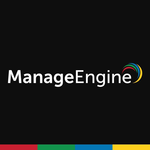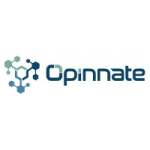I'm using the Fortinet firewalls, so I need the firewall manager tool to manage those files, together with the FortiManager. The Tufin guys provided a solution for our data center where we have a box server, which was specifically developed for Tufin. It would run the scan on the network, get to the firewall, or go to the router, run the scan and give me the compliance, and then send it to me. Then I get a report from there.
The features I have found most valuable are its capability to check on the firewall and the routers. Afterward, it checks out all the configs, checks the vulnerabilities, checks the risks - it checks everything that may end up causing our router to be compromised. In the end, it recommendations what we should do.
Then, if we apply the recommendations, it will scan again and give us a percentage. Sometimes we find out that at first that we didn't meet the compliance, getting a 46% maybe. Then, when after I apply the recommendations, after discussing with my team, and approving the recommendations, it is all remedied. After that, it goes to 80-something percent. And that is what we are looking for.
One area in which I need it to improve is that I need it to accommodate all the files and all the tools. For example, when I buy the firewall management tool, I want it to manage the firewall of every firewall I use across my organization. If I'm going to depend on only one vendor, and it looks likes a vendor or a catered tool, it can't help on any vendor to scan the technology and give the auditing compliance. This is something they can improve from their side.
The second thing I need is that if Tufin comes and deploys their solutions on my premises, I would like to have full support from them. Unfortunately, I didn't have their full support. So what worried me is that whenever the box is no longer working, then I'm no longer going to be able to see my compliance. I know I'm not going to charge whoever is not complying on my premises.
To sum up, the two main negative points with Tufin Orca are the absence of full support and that accommodation of files and tools is not provided in a good way.
Additionally, what Tufin should include in the next release is the ability to see the logical bullets points. In my case, I wanted to see the physical report because when things tripped and went wrong we needed to start fixing it on the physical side. So I would like to have the physical tool policy before we can have the looks side.
But on the looks side it was very good. We need to filter up to it regarding the beneficiaries in the policies. So it was very good on that side of the data, but when I'm using it as a firewall manager, and then find the firewall is down, I need to see it on the Tufin. Also, I need the capability for Tufin to start alerting me whenever there is a change on the firewall.
I can say that we didn't know about that function on Tufin and when we try to communicate with the Tufin guys, they are not able to assist us on that. So we end up having someone go to our firewall and start to make a change, and we end up not having the right thing and not being able to manage our firewall accordingly. The main point of using the same tool as a firewall manager is to have the daily health check of the box.
I have used Tufin for the last two years and then I left it when Skybox was introduced to me. Unfortunately, I didn't have the capacity to use Skybox because I didn't have the skills on my team, so I decided to leave it. But I am looking forward to getting the new tool which will help me to do what I need.
The initial setup was very complex. What worried us at first was that we didn't know how to integrate it with the network. We had to call the Tufin guys to help with that and they physically brought it to us for the integration to the network. So that was challenging.
When you ship the product to our country, to my organization, it is quite expensive. It's not cost-effective. It's quite expensive because we end up paying extra for accommodation, the transport, everything for that person to come and assist us on the integration to the network.
Generally, you need to pay for everything - for the support and the implementation with the integrator.
We can also add this to the areas for the improvement, that implementation is difficult and it would be great if they could simplify the way the person can implement the products.
On a scale of one to ten, I would give Tufin Orca a five. I would recommend it only if the organization has the skills and enough requirements so that they are able to run it. It is a very good tool when you use it because it basically gives you what you want. It is just hard in terms of support, patching, and upgrading. Overall, it's challenging if you don't have the skills or resources.
This product will work for those organizations that have the knowledge of how to install the solution.












